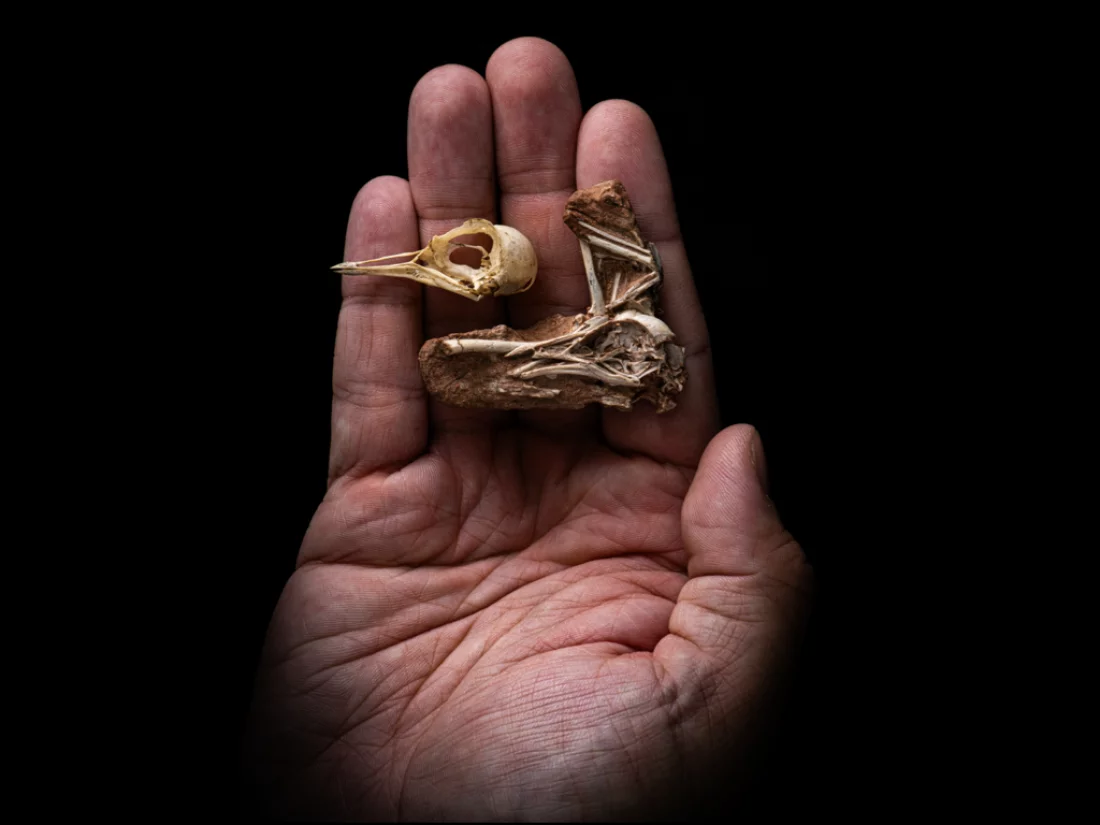Birds, the distant relatives of dinosaurs, have long captivated scientists with their intelligence and remarkable brain structures. However, researchers have had limited knowledge of how bird brains evolved over millions of years — until now.
Daniel Field, a vertebrate biologist at the University of Cambridge, emphasizes the advanced cognitive abilities of birds, which “rival mammals in terms of their relative brain size and the complexity of their behaviors, social interactions, [and] breeding displays.” A new fossil discovery is shedding light on how these traits may have developed. Named Navaornis hestiae, this ancient species represents the most complete evidence yet of the brain structure in ancestral birds that once flew alongside dinosaurs.
Understanding bird brain evolution has historically been challenging due to the scarcity and fragility of fossil evidence. Most known bird-like fossils are flattened, with features like skulls too damaged to reveal much about the three-dimensional brain structure. According to Luis Chiappe, a paleontologist at the Natural History Museum of Los Angeles County, these fossils are often so compressed that crucial anatomical details are lost. But the exceptional preservation of a fossil discovered in 2016 by Brazilian paleontologist William Nava is allowing scientists to reconstruct a bird brain from about 80 million years ago, bridging the gap between earlier bird-like dinosaurs and modern birds.
Navaornis hestiae is estimated to be similar in size to a pigeon or starling. This small, feathered bird likely lived just 10 to 20 million years before the mass extinction event that ended the age of dinosaurs. According to Chiappe, the bird’s intact skull is strikingly modern in appearance, which allowed researchers to create a detailed digital model of its brain using CT scans.
The findings reveal some features that are dinosaur-like and others that hint at the cognitive sophistication of modern birds. While the cerebellum, responsible for flight coordination in modern birds, was less developed, the inner ear structures were more prominent. This suggests that early birds may have relied on a different mechanism for balance and flight control.
The cerebrum, the part of the brain linked with higher-level cognition, was relatively large in Navaornis hestiae, comparable to that of modern birds. This suggests that these early birds might have been more intelligent than previously thought. According to Field, the bird’s intelligence likely played a role in finding food, attracting mates, and possibly establishing social hierarchies.
Ultimately, the discovery of Navaornis hestiae offers a rare glimpse into the evolutionary journey of bird brains, providing clues about how cognitive and physical adaptations arose in response to new environments and challenges. This ancient bird’s well-preserved fossil bridges evolutionary gaps and deepens our understanding of how some of the most intelligent creatures on the planet came to be.
